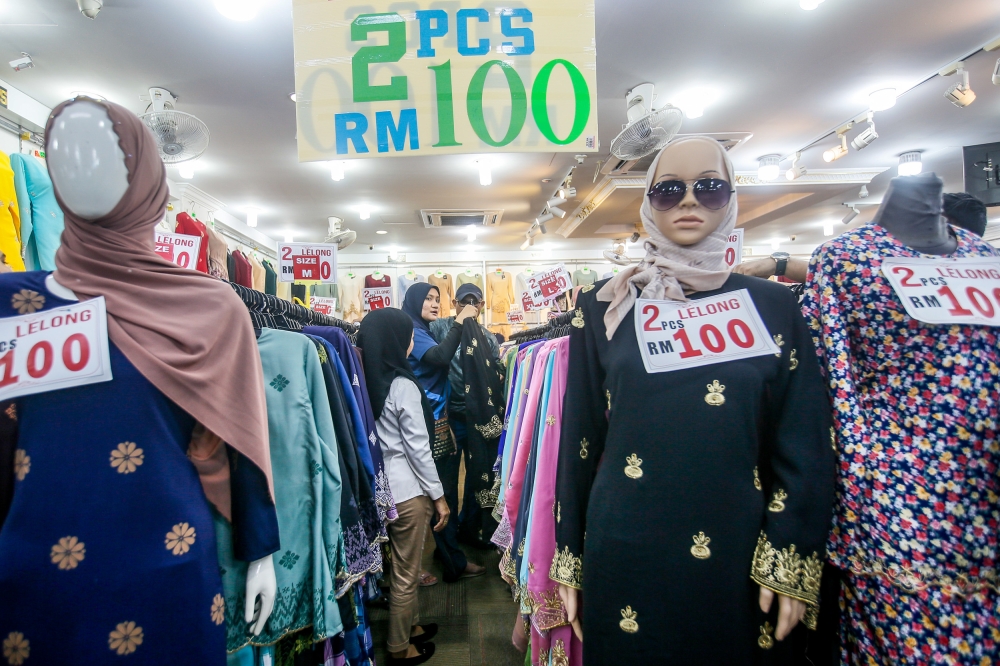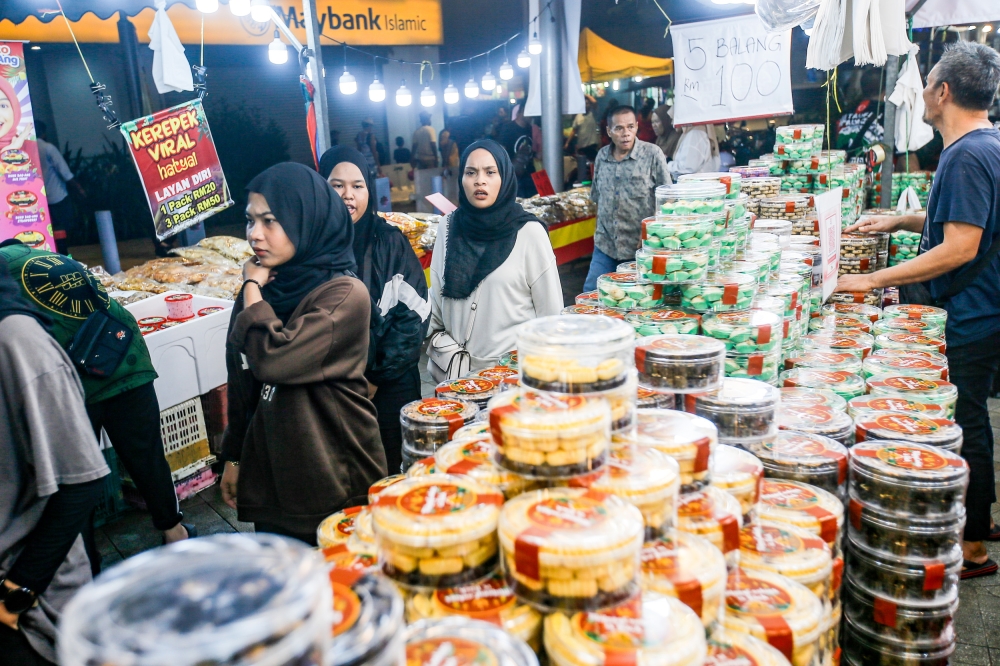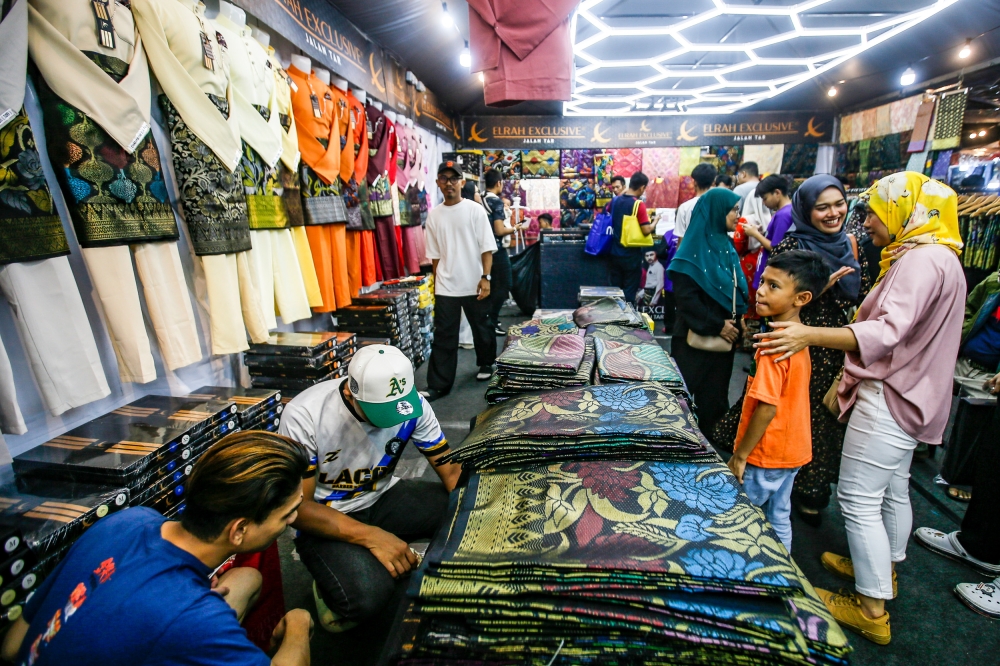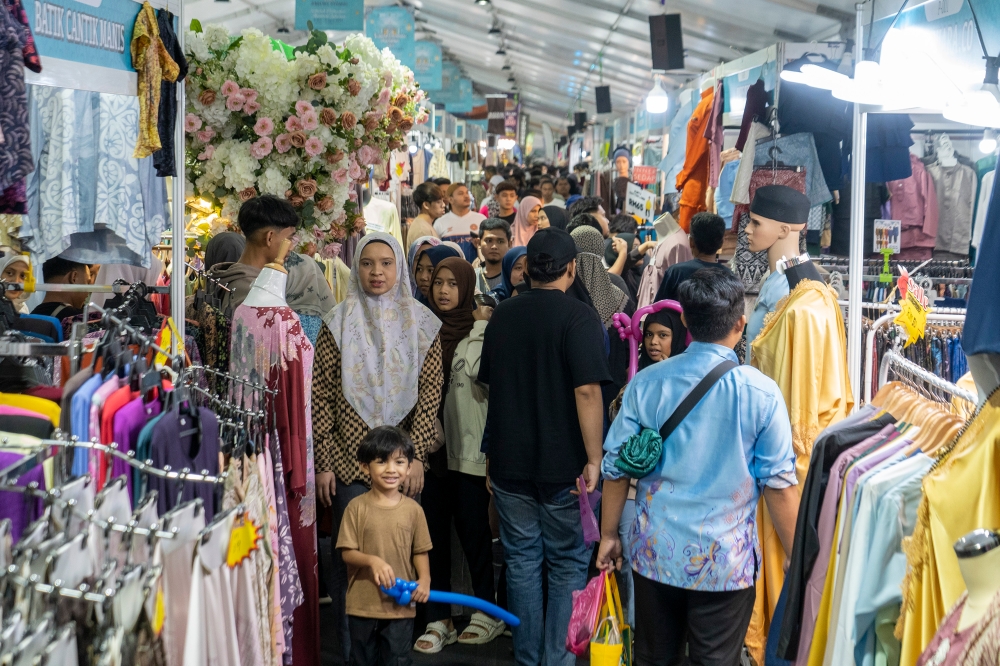KUALA LUMPUR, April 9 — Gusneldi said he has been a trader since he was young, and usually the last week of Ramadan would be a peak shopping period for Muslims who only have a few days left to prepare for Aidilfitri.
The 40-year-old who sells Malay traditional attire said in previous years he could already observe an increase in sales merely one week after he started selling. This year, he said remained uncertain of his sales even after two weeks had passed.
“This year, business is a bit slower than last year. But I believe that it is not just us who feel that way, it seems like it is like that for everyone else too.
“I think it's because people are finding it easier to buy things online,” he told Malay Mail, when met within the bustling Ramadan and Aidilfitri bazaar near Jalan Tuanku Abdul Rahman here.
He said his sales now more often than not relied on luck, and he had to resort to selling at discounted prices — such as three pairs of baju kurung for RM100. But even that had failed to catch the attention of consumers, with many content with window shopping.
“Before we had lowered the price to three pairs for RM100, the price for one pair of clothing was around RM70 to 90. But since we did not get many customers, we sold them even cheaper. If we calculate the cost of the tailoring, the price would not even cover that,” he said.
“Usually, we used to operate the shop for a whole day from morning till night, and could generate RM8,000 in daily revenue, but now, achieving even half of that has become challenging. Sometimes, we only manage to earn RM2,000 in a day,” he said.

In February, the Department of Statistics Malaysia reported that the overall value of e-commerce income grew 4.9 per cent compared to last year, recording a value of RM1.2 trillion.
Online shopping platforms also launched campaigns to target customers during the festive period, such as Shopee's “Raya Bersama Shopee”, Lazada's “Jualan Raya Fantastik Lazada” and Zalora's “Zaloraya 2024”.
This comes as Phase 2 of the Sumbangan Tunai Rahmah cash aid was disbursed to 8.4 million recipients on April 3, involving payments between RM100 and RM650, while civil servants in Grade 56 and below received their special Aidilfitri aid of RM500 on April 5.
Economically, inflation was up 1.8 per cent in February 2024 compared to the same period last year, while Malaysian parents' consumption was also conservative due to the start of the new school year in mid-March.
This could be mirrored in the bazaars Malay Mail visited, with many stalls putting up signs saying “belong” — Malay for “auction” — advertising their discounted prices.

Further down the lane from Gusneldi, Alisya Alisman, a 20-year-old student who was assisting her family in selling “kuih Raya” — treats and biscuits usually served to those who come visiting during the festive period — also agreed with Gusneldi.
“We also have our own online kuih raya business and what I can say is that our online sales are better compared to physical store sales, with online purchases mostly made by customers from outside the area, particularly from Brunei.
“Despite fewer purchases, there is still a significant amount of foot traffic in the area because mostly many people from outside come to pick up stuff here for online purchases,” she said.
She related that from her experience in the last two years, her family could sell up to RM5,000 worth of kuih daily. This year, they could barely make half of that.
Like Gusneldi, she also highlighted how many customers this year showed little interest in making any purchases of their snacks which included old and new favourites such as pineapple tarts, red velvet cookies, semperit and cassava chips.

“Although many people were walking around, nobody seems to be buying. We have started promotions since last Friday but even after lowering the prices, most people come just to walk around.
“Everyone also mentions a decrease in sales when I talk to other sellers,” she said.
Alisya said her family would usually prepare 6,000 packs of kuih, especially since demand would surge in the final weeks of the fasting month. When she spoke to Malay, 70 per cent of them were still unsold.
Over in another Aidilfitri bazaar in Putrajaya, Izzat Zulkifli who sells traditional attires like baju Melayu and baju kurung, also chalked up the dwindling sales to Malaysians' increased preference for online shopping.
“Customer turnout varies throughout the day as nights are better. It is different from previous years as it used to be livelier.
“Nowadays, it is not as lively. We have noticed a reduction in customers since people prefer online shopping now,” he told Malay Mail.

To gain more customers, he said he would rotate the designs of the outfits that are promoted every week.
Drawing from his observation, he said there is a difference in preferences for different age groups.
“We are trying to adapt to the changing market. There is fierce competition all around as everyone is selling traditional Malay clothes for Eid.
“To maintain our business, we continue to promote and offer discounts. We want to stand out by offering better promotions compared to others,” he said.



















